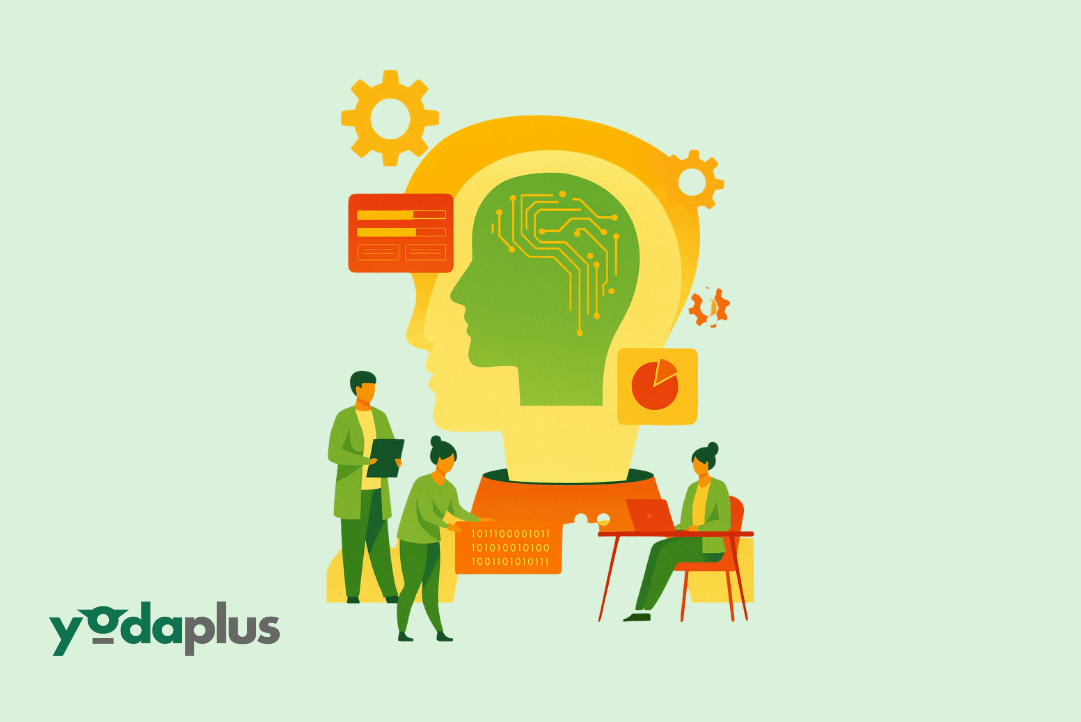
Human-in-the-Loop AI: Memory Rewrites and Skill Expansion
August 18, 2025 By Yodaplus
Introduction
Artificial Intelligence (AI) is moving into a new era where machines are not only trained once but can continue learning and improving. This is where AI-powered automation plays a central role. Instead of being static, autonomous agents can now refine their skills, adjust workflows, and rewrite memory with feedback from humans. This is called human-in-the-loop learning, and it is becoming the foundation for building self-improving systems.
In the world of Artificial Intelligence in business, this capability means better decision-making, faster adaptation, and more intelligent responses to changing environments. When combined with AI-driven analytics, these agents are not just automated tools; they become active problem-solvers.
What Does Human-in-the-Loop Feedback Mean?
Human-in-the-loop feedback is the process of involving people in the learning cycle of AI. While machine learning and deep learning models can process massive datasets, they still benefit from corrections and guidance from experts. For example:
-
A financial analyst can correct an AI model training output if it misses a pattern in market risk.
-
A logistics planner can adjust AI in logistics workflows when unexpected supply chain delays occur.
-
A customer service manager can refine Conversational AI to make it sound more empathetic.
These interventions help AI agents learn faster, avoid repeating errors, and build more reliable AI applications across industries.
Memory Rewrites for Continuous Learning
A key part of building self-improving autonomous agents is the ability to rewrite memory. Traditional LLM models or neural networks rely on training data that does not easily update in real-time. Human-in-the-loop feedback enables memory rewrites where the AI updates its knowledge base after corrections.
For example:
-
In AI workflows for logistics, if a delivery route is blocked, human corrections help the agent store better rules for rerouting.
-
In Artificial Intelligence solutions for compliance, memory rewrites help ensure the system remembers updated regulations.
-
In crew AI environments, skill updates can be embedded into shared memory for faster decision-making.
This ability reduces errors and makes autonomous AI more resilient.
Skill Expansion in Autonomous Learning Loops
Beyond memory rewrites, autonomous systems need to expand their skills over time. This involves creating new capabilities that were not part of the initial design. Human feedback ensures the growth is aligned with business goals.
Some examples include:
-
Expanding AI applications in finance to include portfolio risk assessments after learning from expert corrections.
-
Using AI-driven analytics in retail to move from sales forecasting into customer sentiment analysis.
-
Extending multi-agent systems in logistics to coordinate between warehouses, shipping, and customs through workflow agents.
Here, agentic AI and generative AI frameworks play a vital role, since they allow autonomous agents to create new strategies and adapt in real time.
Why Human-in-the-Loop Matters for Businesses
For enterprises, the combination of AI-powered automation and human expertise reduces risk and increases trust. In industries like finance, logistics, and customer service, relying only on autonomous agents may cause costly errors. With human feedback, responsible AI practices become easier to implement.
Key benefits for businesses include:
-
Accuracy: Human corrections improve the quality of AI model training.
-
Compliance: Updates ensure artificial intelligence services align with regulations.
-
Efficiency: AI takes care of repetitive tasks while experts focus on strategy.
-
Scalability: Human-in-the-loop systems create AI innovation that grows with the business.
This is why Artificial Intelligence in business is moving towards hybrid systems where automation and human oversight work together.
Explainable AI and Risk Management
One concern in scaling autonomous AI is transparency. Without explanations, businesses struggle to trust decisions. This is where explainable AI becomes essential. By showing why a decision was made, humans can evaluate and refine outputs.
Additionally, AI risk management ensures that agents do not develop biases or unsafe strategies during skill expansion. When combined with responsible AI practices, human-in-the-loop frameworks safeguard both the business and its customers.
The Future of Human-in-the-Loop Autonomous Learning
Looking ahead, future of AI development will rely heavily on human-in-the-loop systems. Self-improving agents powered by generative AI and guided by intelligent agents will support industries ranging from healthcare to logistics.
In supply chains, AI in logistics will learn from real-world disruptions to build more reliable systems. In finance, AI-driven analytics will constantly improve through human corrections. In customer engagement, Conversational AI will deliver personalized interactions while humans provide cultural and emotional fine-tuning.
By blending Artificial Intelligence solutions with human expertise, organizations can ensure their autonomous systems keep evolving responsibly.
Conclusion
Human-in-the-loop feedback is no longer optional for building autonomous agents that are reliable, adaptable, and scalable. At Yodaplus, our Artificial Intelligence Solutions are designed to integrate human oversight into AI systems, enabling them to continuously refine their decision-making through memory rewrites and skill expansion.
By embedding these feedback-driven loops, Yodaplus helps businesses transform static AI workflows into self-improving systems. This means that every interaction, whether it’s a customer query, a financial transaction, or a supply chain decision—becomes a source of learning for the AI, making it smarter and more effective over time.